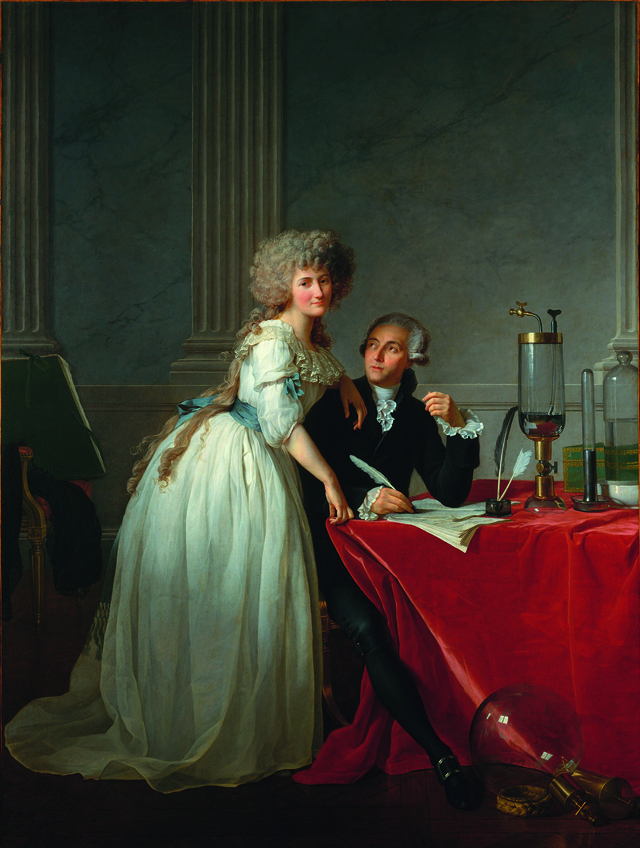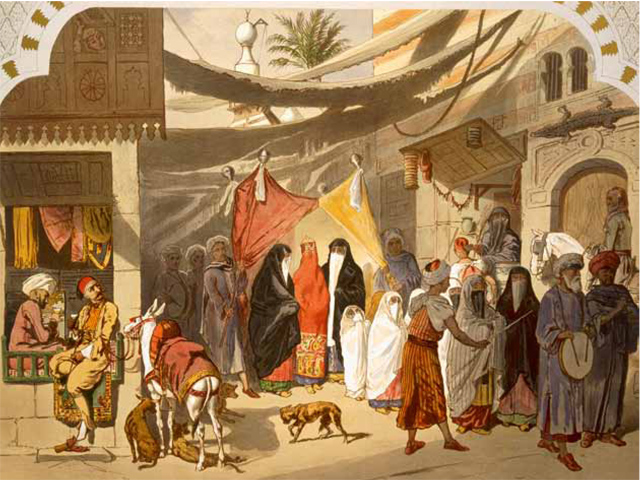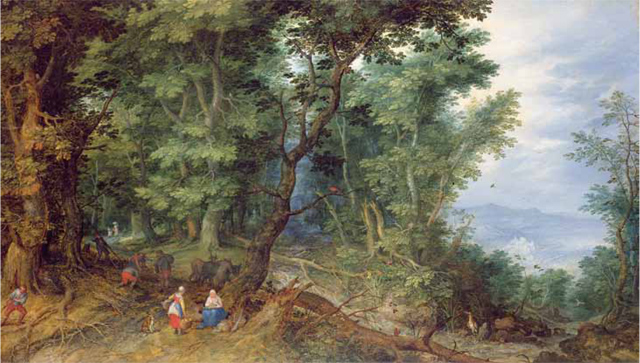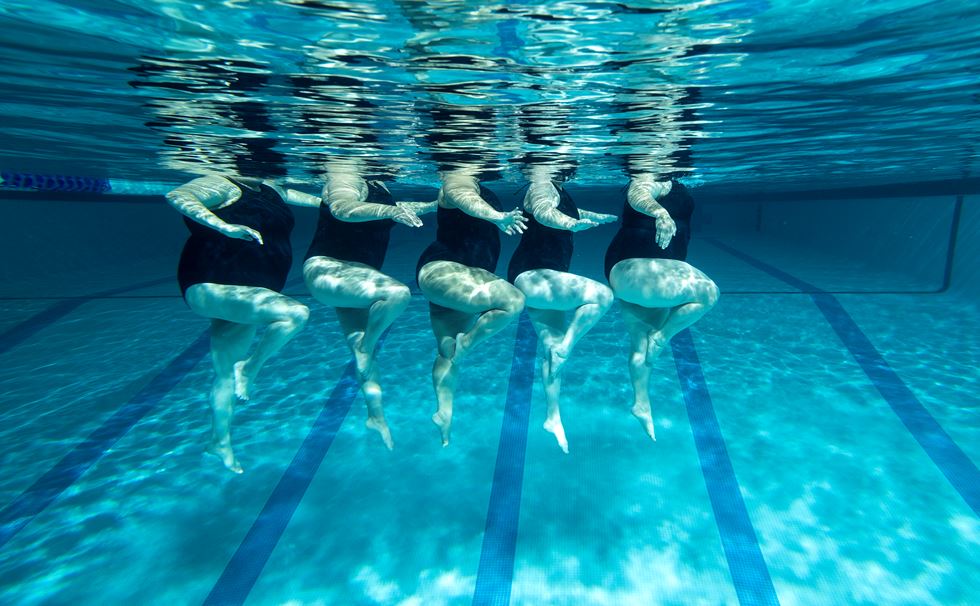My favourite painting: Paul Nurse
Paul Nurse chooses his favourite painting for Country Life.


Antoine-Laurent Lavoisier and His Wife, 1788,byJacquesLouisDavid (1748–1825), 8ft 61⁄4in by 6ft 45⁄8in, The Metropolitan Museum of Art, New York.
Paul Nurse says: ‘It is unusual to see paintings of scientists and David's Lavoisier is memorable because it is such a fine one. The only other paintings of comparable quality I know are Vermeer’s The Astronomer and The Geographer. I like the visually striking leg of Lavoisier extending out of the picture and the jumble of scientific apparatus framed by the Classical surroundings. All is softened by the warmth of his gaze at his wife and research assistant, as well as her elegant, although rather impractical, dress. His face displays a quiet confidence, reflecting that he is the greatest chemist of his time, whom history will judge as the founder of modern chemistry. It is a magnificent painting.'
Sir Paul Nurse is President of the Royal Society.
John McEwen comments: 'Jacques Louis David was a cousin of François Boucher (1703–70), Rococo master, protégé of Louis XV’s mistress Madame de Pompadour and director of the Académie Royale. David’s neo-Classicism was the severe and geometric opposite of decorative Rococo and his politics were no less contrary. Arts dictator in the Revolution, he voted for the execution of Louis XVI and made reforms to the Académie. This neo-Classical masterpiece is typical in its Rococo renunciation, not least the emphasis on work, not play. only the ribbons tying her extravagantly long hair betray a trace of Rococo style.
David was the son of a Parisian haberdasher. At eight, he was sent to boarding school and then to board with a tutor, where he determined to be a painter. Boucher secured him a place at 18 in the studio of Joseph-Marie Vien, a prelude to the Académie. Like Boucher, he won a Rome scholarship. He was elected a member in 1784.'
The aristocrat Lavoisier is ‘the father of modern chemistry’. He recognised and named oxygen (1778) and hydrogen (1783), categorised the elements and even helped construct the metric system. His wife, 15 years his junior, was his ‘muse and assistant’. she had lessons from David, hence the drawing portfolio, and arranged this portrait, which cost her husband, who was also a financier, the colossal sum of 7,000 livres.
Lavoisier was guillotined, a fate David, despite imprisonment, miraculously escaped, although his final years were spent in Belgian exile following the defeat of his greatest patron, Napoleon. Mme Lavoisier also survived, despite bankruptcy, and briefly married another eminent scientist, the American-born, English and Bavarian domicile Sir Benjamin Thompson, Count von Rumford. Despite remarriage, she insisted on retaining Lavoisier’s name. she is buried in the Paris cemetery of Père Lachaise, where David’s heart, but not his body, is also buried.
Sign up for the Country Life Newsletter
Exquisite houses, the beauty of Nature, and how to get the most from your life, straight to your inbox.
This article was first published in Country Life, November 12, 2014
More from the My Favourite Painting series

My Favourite Painting: Frank Gardner
Frank Gardner chooses his favourite painting for Country Life

My Favourite Painting: Adrian Lester
Adrian Lester chooses his favourite painting for Country Life.
Country Life is unlike any other magazine: the only glossy weekly on the newsstand and the only magazine that has been guest-edited by HRH The King not once, but twice. It is a celebration of modern rural life and all its diverse joys and pleasures — that was first published in Queen Victoria's Diamond Jubilee year. Our eclectic mixture of witty and informative content — from the most up-to-date property news and commentary and a coveted glimpse inside some of the UK's best houses and gardens, to gardening, the arts and interior design, written by experts in their field — still cannot be found in print or online, anywhere else.
-
 A mini estate in Kent that's so lovely it once featured in Simon Schama's 'History of Britain'
A mini estate in Kent that's so lovely it once featured in Simon Schama's 'History of Britain'The Paper Mill estate is a picture-postcard in the Garden of England.
By Penny Churchill
-
 Splash! A Century of Swimming and Style: A whistle-stop history, from the Roman Baths to Hampstead Heath
Splash! A Century of Swimming and Style: A whistle-stop history, from the Roman Baths to Hampstead HeathEmma Hughes dives into swimming's hidden depths at the Design Museum's exhibit in London.
By Emma Hughes
-
 My favourite painting: Allan Mallinson
My favourite painting: Allan MallinsonMilitary historian Allan Mallinson picks an image of 'faith, generosity and ultimate sacrifice'.
By Charlotte Mullins
-
 My Favourite Painting: Piet Oudolf
My Favourite Painting: Piet Oudolf'One cannot sense whether he is far out on the ocean or closer to shore, or what he may be watching or feeling in that moment as he stares towards the beach.’
By Country Life
-
 My Favourite Painting: Mary Plazas
My Favourite Painting: Mary Plazas'There is compassion, awe, humility, a knowing yet a questioning in the glistening eyes. It moves me, it inspires me beyond the need to know.’
By Country Life
-
 My favourite painting: Robert Kime
My favourite painting: Robert KimeRobert Kime shares his fondness for New Year Snow by Ravilious
By Country Life
-
 My Favourite Painting: Anna Pavord
My Favourite Painting: Anna PavordAnna Pavord chooses a picture which reminds her of where she grew up
By Country Life
-
 My favourite painting: The Duchess of Wellington
My favourite painting: The Duchess of WellingtonThe Duchess of Wellington chooses her favourite painting for Country Life.
By Country Life
-
 My favourite painting: Maureen Lipman
My favourite painting: Maureen LipmanMaureen Lipman chooses her favourite painting for Country Life.
By Country Life
-
 My favourite painting: Jacqueline Wilson
My favourite painting: Jacqueline Wilson'I looked at this painting and decided to write about a Victorian circus girl one day'
By Country Life